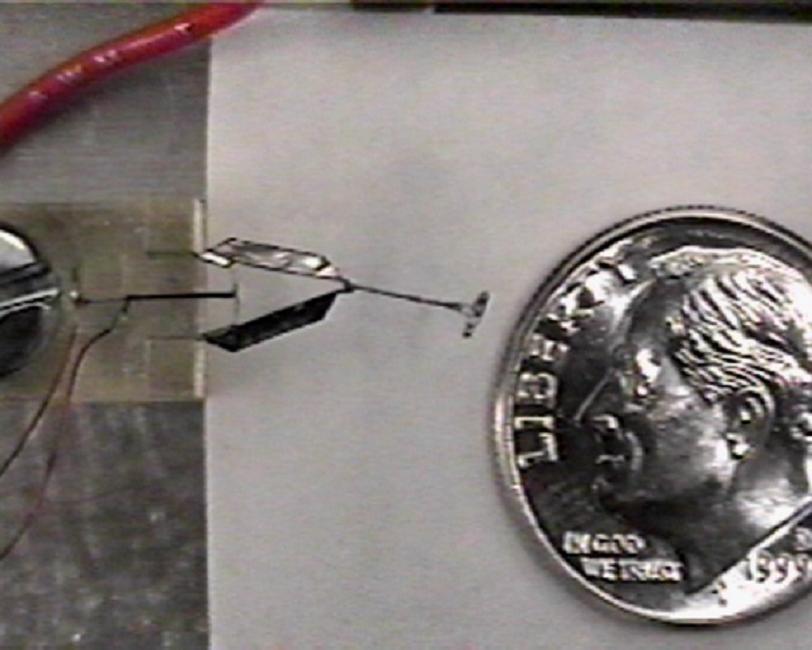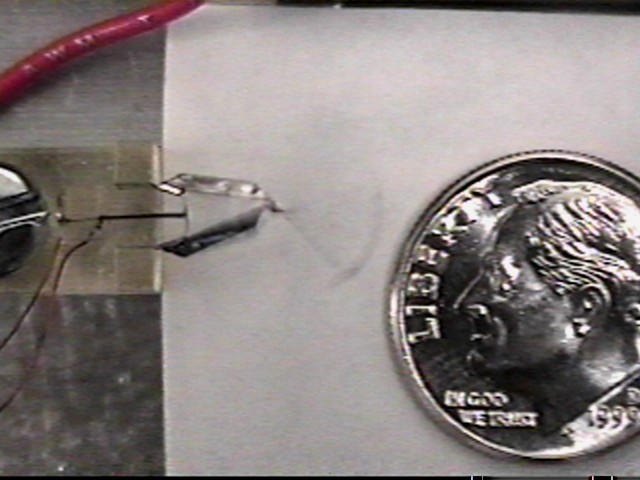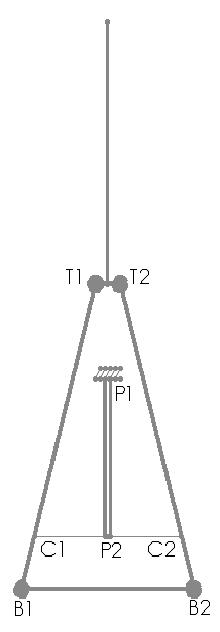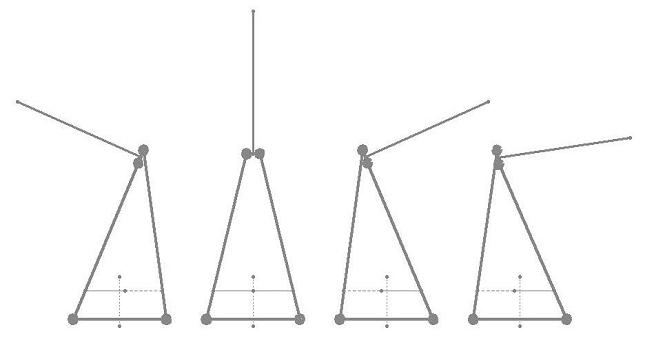00g-Thorax: 1-DOF Cable-driven
Completed Mar 2000. Status: Shorted piezo

(a) Static image
|

(b) Driven at 44 Hz
|
|
Description
The
00g
thorax had a 4-bar with link lengths of 6mm for the sides,
3.5mm for the base and 0.5mm
for the spar.
A 5mil (125 micron)
diameter, 5mm long tungsten wing spar was attached and a 2.5mg
mass added at the end. A 5mm x 1mm unimorph was constructed
with 100 micron thick PZN-PT
and 50 micron thick steel.
The resulting resonant frequency was 44 Hz with a motion amplitude
of 60 degrees while driving the
unimorph with a bipolar +/-200V sinusoid
(the PZN-PT may have been depoled with each change
in polarity so the
effective resonant frequency may have actually been 88 Hz). It
should be noted that
before the 2.5mg mass was added, the resonant frequency was
observed at 250 Hz with only 10
degrees of motion for the same voltage amplitude.
Principle of operation
The way in which the cable-driven design works can be understood
by studying the schematic below.
As the unimorph tip, P2, is driven laterally, one side of the
flexible cable, C1C2, goes into tension,
pulling one of the
side links, while the other side goes slack. Each side of the cable
alternates being in
tension and being slack. One advantage is that
the links can be "over-driven" beyond locations which
previously would have been singularities. A disadvantage is that
the brief periods of slack states could
possible by followed by large jerks
in motion as the slack is taken up.
Status
The PZN-PT was tested on the high voltage amplifier.
Unfortunately, turning off the amplifier results in
a large voltage spike and this resulted in a short in the
PZN-PT so it is no longer functional.





